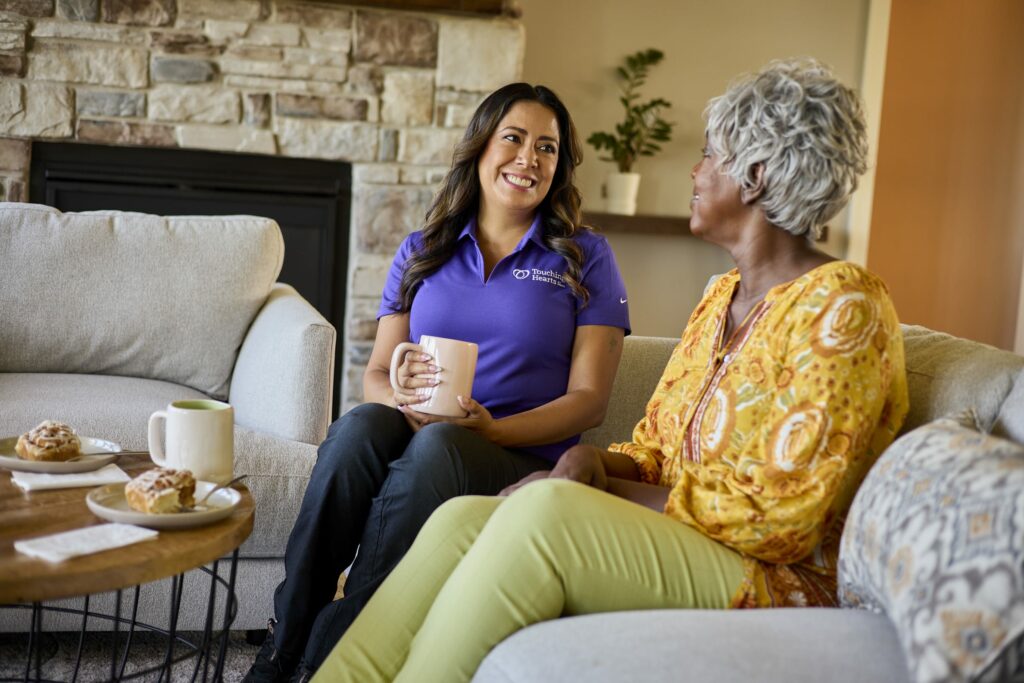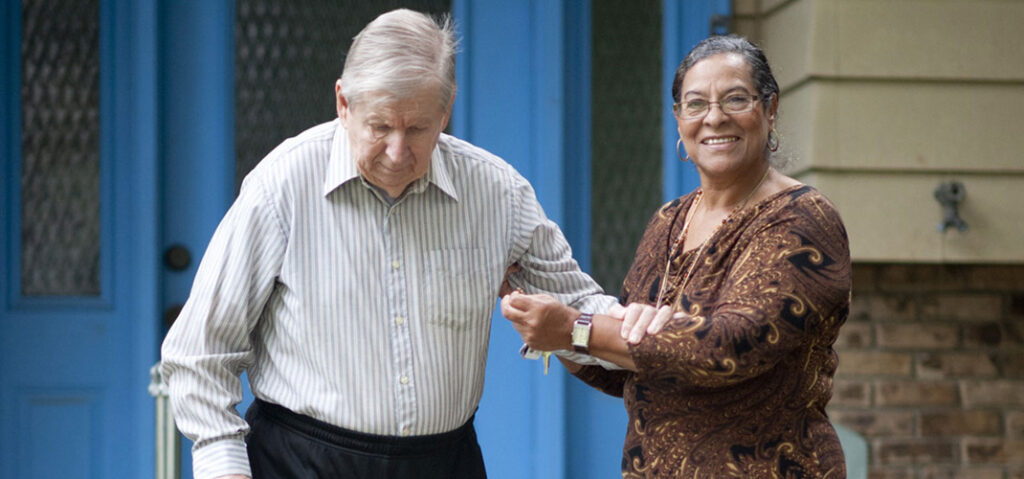Helping an Aging Loved One Avoid Slips, Trips, and Falls
As we age and grow older there becomes a time when there’s no longer such thing as a simple slip or fall. As many elders and their caregivers discover, the slips, trips, and falls that they may have shrugged off when they were younger now can result in serious injury! In fact, you have most likely heard about a fall resulting in a broken arm, shattered pelvis or worse. Because it takes longer to ‘bounce back’ and recover from even minor injuries, the aging process can change our bodies and contribute to more significant injuries.
As we age our bodies become less resilient, our bones break more easily, and we bruise more easily. To accommodate these changes it is important to think preventatively. As Ben Franklin coined, “An ounce of prevention is worth a pound of cure.”
Here are six (6) tips provided by the Mayo Clinic that can help to prevent elder slips and falls[1]:
1) Make an appointment with your doctor
There are several health conditions elders’ experience that can contribute directly to slips and falls. Gout, bursitis, arthritis, and similar conditions can make it difficult to maintain one’s balance, especially if you’re on uneven ground. Your doctor may provide additional elder care advice such as checking the side effects of prescription medications. They may make you dizzy or unsteady on your feet.
Begin your fall-prevention plan by making an appointment with your doctor and be prepared to answer questions such as:
- What medications are you taking? Make a list of your prescription and over-the-counter medications and supplements, or bring them with you to the appointment. Your doctor can review your medications for side effects and interactions that may increase your risk of falling. To help with fall prevention, your doctor may consider weaning you off certain medications — such as sedatives and some types of antidepressants.
- Have you fallen before? Write down the details, including when, where and how you fell. Be prepared to discuss instances when you almost fell but were caught by someone or managed to grab hold of something just in time. Details such as these may help your doctor identify specific fall-prevention strategies.
- Could your health conditions cause a fall? Certain eye and ear disorders may increase your risk of falls. Be prepared to discuss your health conditions and how comfortable you are when you walk — for example, do you feel any dizziness, joint pain, numbness or shortness of breath when you walk? Your doctor may evaluate your muscle strength, balance and walking style (gait) as well.
2) Keep Moving
Physical activity can go a long way toward fall prevention. With your doctor’s OK, consider activities such as walking, water workouts or tai chi — a gentle exercise that involves slow and graceful dance-like movements. Such activities reduce the risk of falls by improving strength, balance, coordination and flexibility.
If you avoid physical activity because you’re afraid it will make a fall more likely, tell your doctor. He or she may recommend carefully monitored exercise programs or refer you to a physical therapist. The physical therapist can create a custom exercise program aimed at improving your balance, flexibility, muscle strength and gait.
3) Wear Sensible Shoes
Footwear choices can have a tremendous impact on slips and falls. Consider changing your footwear as part of your fall-prevention plan. High heels, floppy slippers and shoes with slick soles can make you slip, stumble and fall. So can walking in your stocking feet. Check the shoes and slippers you wear to make sure soles have good tread because smooth bottomed shoes make it easy to fall. Replace worn out shoes and slippers regularly. This is also a great way to help cut down on the fungal infections that plague many elder’s feet!
Remember:
- Have your feet measured each time you buy shoes, since foot size can change.
- Buy properly fitting, sturdy shoes with nonskid soles.
- Avoid shoes with extra-thick soles.
- Choose lace-up shoes instead of slip-ons, and keep the laces tied. If you have trouble tying laces, select footwear with fabric fasteners.
- If you’re a woman who can’t find wide enough shoes, try men’s shoes.
4) Remove Home Hazards
Take a look around your home. Your living room, kitchen, bedroom, bathroom, hallways and stairways may be filled with hazards. Clutter and debris that gets underfoot can contribute directly to falling down. Most elders have the best intentions. They mean to keep their living areas clean and tidy. However, that isn’t always possible. Having someone help perform the tasks of daily living ensures that you are in a tidy environment without the clutter that causes falls.
Remember:
- Remove boxes, newspapers, electrical cords and phone cords from walkways.
- Move coffee tables, magazine racks and plant stands from high-traffic areas.
- Secure loose rugs with double-faced tape, tacks or a slip-resistant backing — or remove loose rugs from your home.
- Repair loose, wooden floorboards and carpeting right away.
- Store clothing, dishes, food and other necessities within easy reach.
- Immediately clean spilled liquids, grease or food.
- Use nonskid floor wax.
- Use nonslip mats in your bathtub or shower.
5) Light Up Your Living Space
One reason elders fall is that they simply don’t see the obstacles that trip them up. Our vision changes as we get older. Cataracts, diabetic retinopathy, and macular degeneration make it hard to see, especially in a low light environment. Keep your home brightly lit to avoid tripping on objects that are hard to see.
Remember:
- Place night lights in your bedroom, bathroom and hallways.
- Place a lamp within reach of your bed for middle-of-the-night needs.
- Make clear paths to light switches that aren’t near room entrances. Consider trading traditional switches for glow-in-the-dark or illuminated switches.
- Turn on the lights before going up or down stairs.
- Store flashlights in easy-to-find places in case of power outages.
6) Use Assistive Devices
There are many ways you can make your home safer. Installing handrails and grab bars in slip-prone areas, such as the bathroom, can make a tremendous difference. Something as simple as having a bar to hold onto while getting in and out of the shower can make independent living much safer for your elder. Stair lifts, chairlifts, and vertical platform lifts are all specialized lifts that can be installed in your home so you can travel from one floor to another without having to physically climb the stairs. This greatly reduces the risk of falling.
Your doctor might recommend using a cane or walker to keep you steady. Other assistive devices can help, too. Here are types of devices that can help:
- Hand rails for both sides of stairways
- Nonslip treads for bare-wood steps
- A raised toilet seat or one with armrests
- Grab bars for the shower or tub
- A sturdy plastic seat for the shower or tub — plus a hand-held shower nozzle for bathing while sitting down
For fall prevention information please contact your local Touching Hearts at Home office by visiting our website: www.touchinghearts.com.
You may also like:
Recline = Decline
On July 1, 1946, the Communicable Disease Center (CDC) opened its doors and occupied one floor of a small building…
Reach out!
It’s a fact, home is the safest place for all of us to be right now. But there’s this to…
National Handwashing Awareness Week
The first week of December is National Handwashing Awareness Week! Why is this week so important? The goal of National…
Holiday Caregiving
Holidays like Thanksgiving, Hanukkah, Christmas, and New Years are celebrated and happy times for many people, however, if you are…
Survivor Day
In 1999, Senator Harry Reid, who lost his father to suicide, introduced a resolution to the United States Senate which…


